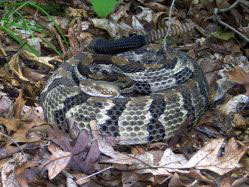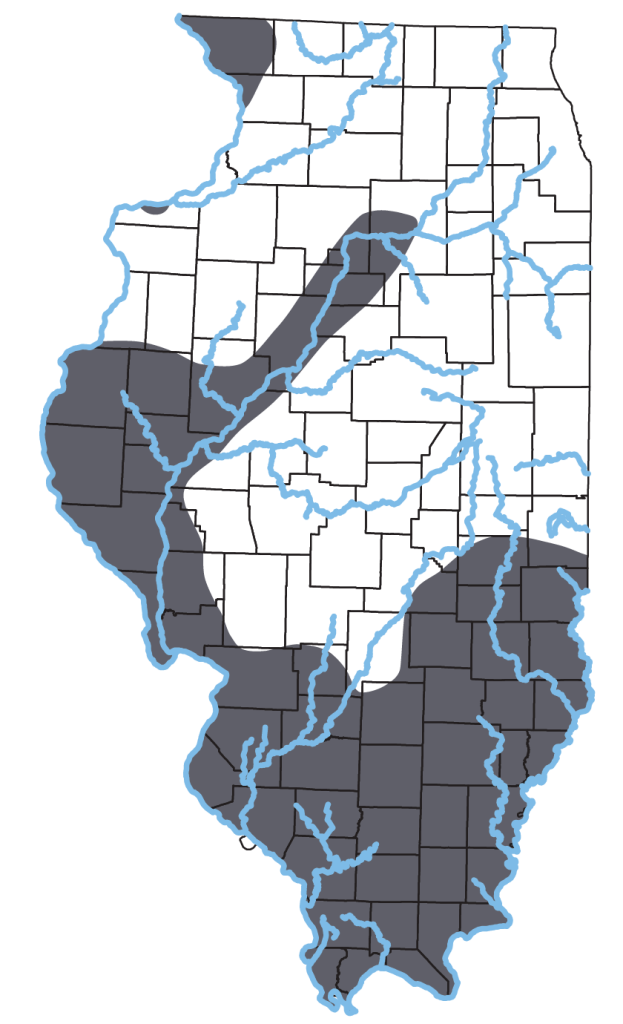Crotalus horridus (Linnaeus, 1758)
VENOMOUS VENOMOUS VENOMOUS VENOMOUS VENOMOUS

Key Characters: Small asymmetrical head scales; elliptical pupil; pit between eye and nostril; back with jagged dark bands; rattle or button on tail tip; back scales strongly keeled; anal scale not divided.
Similar Species: Massasauga. See the Key to Snakes of Illinois for help with identification.
Subspecies: None currently recognized, but see Nomenclatural History below.
Description: Large (up to 180 cm TL), stout-bodied venomous snake. Back gray, light yellow, or greenish white with 20–25 black, jagged crossbars or blotches. Sometimes an orange or rust stripe down midback. Head clearly larger than slender neck. Dark stripe behind each eye. Tail tip uniformly black in adults. Belly pink, white, cream, or gray, with dark stippling toward sides.
Habitat: Heavy forest along rocky outcrops and bluffs.
Natural History: Active April through October, often seen sunning on rock ledges near winter dens. Forages during summer in upland forests and some border and disturbed habitats where rodents are abundant. Diet mainly small mammals, such as mice, squirrels, and chipmunks. Usually mates July and August with 6-10 young born late summer or early autumn of following year. Newborn 25–35 cm TL. Predators of young include hawks, coyotes, skunks, foxes, and common kingsnakes. Most adult mortality caused by vehicles and wanton killing by humans.
Status: Threatened in Illinois. Relict elsewhere. Threats, besides indiscriminate killing by people, include vehicles and clearing of forest. Previously more widespread, now probably occurs in moderate numbers only in the Shawnee Hills.
Etymology: Crotalus – crotalum (Latin) meaning rattle; horridus – (Latin) meaning dreadful, bristly, rough.
Original Description: Linnaeus, C. 1758. Systema Naturae per Regina tri Naturae secundum Classes, Ordines, Genera, Species, cum Characteribus, Differentiis, Synonymis, Locis. 10th ed. Salvii, Stockholm. 1:824 pp.
Type Specimen: Holotype. Lost.
Type Locality: “America”
Original Name: Crotalus horridus Linnaeus, 1758
Nomenclatural History: Kennicott (1855) listed C. duressus in his Cook County list, probably based on the confusion surrounding Linnaeus’ brief descriptions of C. horridus and C. duressis. However, there is no evidence that C. horridus ever occurred in Illinois. Smith (1961) used the trinomial C. h. horridus because at the time two subspecies were recognized, the second being C. h. atricaudatus Latrielle, 1802, the Canebreak Rattlesnake. Smith (1961) considered the populations in extreme SW Illinois to be intergrades between the two subspecies.


